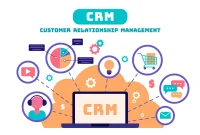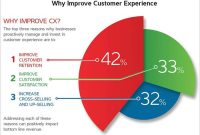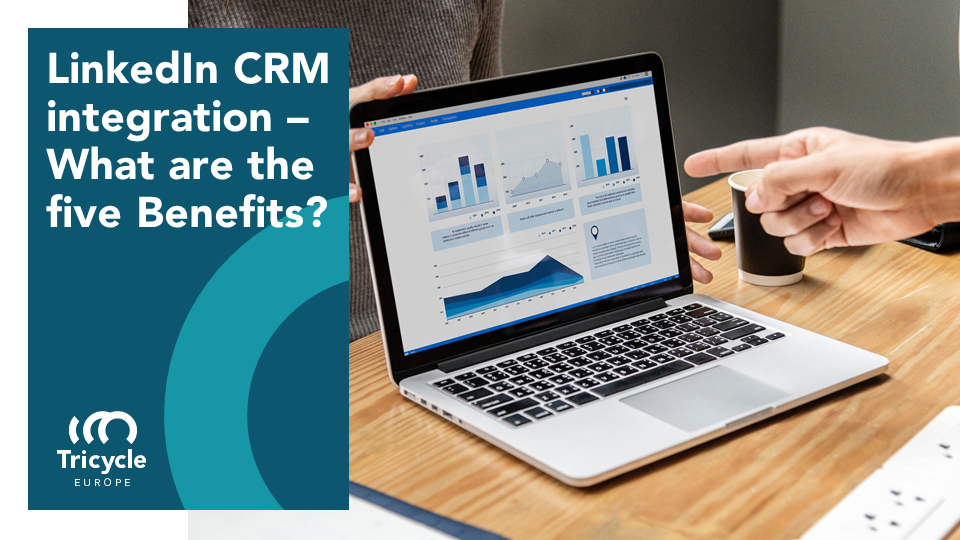In today’s fast-paced, digitally connected world, businesses must stay ahead of the curve by integrating tools that enhance efficiency, strengthen customer relationships, and drive revenue growth. One such game-changing combination is the integration of Customer Relationship Management (CRM) systems with LinkedIn. This powerful alliance can revolutionize the way businesses approach lead generation, customer engagement, and sales strategies. As LinkedIn continues to grow as the leading professional networking platform, integrating it with CRM software has become a strategic necessity for companies aiming to harness the full potential of social selling.
This comprehensive guide explores the significance, benefits, implementation process, and best practices of integrating CRM with LinkedIn. Whether you’re a small business owner, a sales executive, or a marketing strategist, understanding how to leverage this integration can propel your business to new heights.
Chapter 1: Understanding CRM and LinkedIn
What is a CRM? CRM stands for Customer Relationship Management. It’s a system or software designed to manage a company’s interactions with current and potential customers. CRM tools help businesses streamline processes, improve customer service, and increase profitability by organizing and automating communications, sales, marketing, and customer support.
Key functionalities of a CRM include:
- Contact and lead management
- Sales pipeline tracking
- Marketing automation
- Customer service support
- Analytics and reporting
What is LinkedIn? LinkedIn is the world’s largest professional networking platform. With over 900 million users globally, it offers businesses and professionals an unmatched opportunity to connect, share knowledge, recruit talent, and promote products and services.
For sales and marketing professionals, LinkedIn serves as a valuable platform for:
- Identifying decision-makers
- Building relationships with prospects
- Engaging with content
- Sharing thought leadership
- Driving brand awareness
When CRM and LinkedIn are integrated, businesses can combine the power of data-driven customer management with the dynamic engagement of a social network.
Chapter 2: Benefits of Integrating CRM with LinkedIn
1. Centralized Data Access Integration allows LinkedIn profile information, activities, and conversations to be automatically synced with CRM systems. This creates a unified view of leads and customers, eliminating the need for manual data entry and ensuring all team members are on the same page.
2. Enhanced Lead Generation With LinkedIn Sales Navigator or other LinkedIn tools, users can identify and qualify leads based on industry, job title, company size, and more. These leads can be directly imported into the CRM, making the process faster and more accurate.
3. Personalized Outreach CRM systems integrated with LinkedIn provide access to real-time insights about a prospect’s job changes, posts, or mutual connections. This enables sales reps to tailor their communication, increasing the likelihood of engagement and conversion.
4. Improved Workflow Automation With integration, workflows can be automated. For example, when a new connection is made on LinkedIn, it can automatically trigger an email or add a task in the CRM, reducing the manual effort and increasing consistency.
5. Better Performance Tracking CRM systems can track which LinkedIn leads convert into customers. These insights help businesses evaluate the ROI of LinkedIn efforts and adjust strategies accordingly.
6. Streamlined Communication Logging LinkedIn messages and InMail within a CRM ensures that all interactions are recorded and accessible. This leads to better team collaboration and continuity in conversations.
Chapter 3: How to Integrate CRM with LinkedIn
Step 1: Choose the Right CRM Not all CRM systems offer the same level of integration with LinkedIn. Some of the most compatible CRMs include:
- Salesforce
- HubSpot
- Zoho CRM
- Pipedrive
- Microsoft Dynamics 365
Step 2: Use LinkedIn Sales Navigator LinkedIn does not allow full integration with all CRM systems unless you’re using its premium product, LinkedIn Sales Navigator. This tool offers advanced search capabilities, InMail integration, lead recommendations, and CRM syncing.
Step 3: Install LinkedIn Extensions or Apps Most CRM systems have native integrations or third-party apps that connect with LinkedIn. For example:
- Salesforce offers an official LinkedIn Sales Navigator App
- HubSpot integrates via LinkedIn Ads and third-party tools like Surfe
- Zoho CRM provides a LinkedIn integration widget
Step 4: Set Up Sync Preferences Define which data fields should be synchronized between LinkedIn and your CRM. This includes:
- Contact names
- Job titles
- Company names
- Messages
- Engagement history
Step 5: Train Your Team Ensure your sales and marketing teams understand how to use the integrated tools effectively. Training should include how to:
- Import leads from LinkedIn
- Log messages and activities
- Use insights for personalized outreach
- Automate follow-up sequences
Chapter 4: Use Cases and Industry Applications
Sales and Business Development Sales professionals can identify new leads, build relationships, and engage with potential clients more effectively. Integration allows for strategic follow-ups and increased conversion rates.
Recruitment and Talent Acquisition Recruiters can track candidates, maintain communication logs, and create a candidate database within their CRM, improving the hiring process.
Marketing and Branding Marketers can nurture leads generated from LinkedIn campaigns and measure the impact directly within their CRM dashboards.
Consulting and B2B Services Consultants and service providers can manage client interactions and proposals more efficiently, thanks to streamlined LinkedIn-to-CRM communication.
Chapter 5: Challenges and Considerations
1. LinkedIn API Limitations LinkedIn restricts access to certain features via its API unless users are subscribed to Sales Navigator. This can limit functionality for users of free LinkedIn accounts.
2. Data Privacy and Compliance Transferring personal data from LinkedIn to a CRM must be handled with care. Ensure compliance with data protection regulations like GDPR.
3. Integration Costs Some integrations require third-party tools or premium subscriptions, adding to overall software costs. Budgeting for these costs is essential.
4. User Adoption As with any new tool, adoption can be a hurdle. Proper onboarding and continuous support are necessary to maximize ROI.
Chapter 6: Best Practices for CRM-LinkedIn Integration
- Segment Your Audience: Use LinkedIn filters to target the right prospects and segment them within your CRM for targeted campaigns.
- Engage Consistently: Stay active on LinkedIn by commenting, sharing content, and messaging prospects before making a sales pitch.
- Update CRM Regularly: Ensure your CRM reflects the most recent activities and conversations to maintain data integrity.
- Measure What Matters: Use CRM analytics to track KPIs like LinkedIn lead conversion rate, response time, and deal closure speed.
- Stay Compliant: Always obtain consent when storing LinkedIn contacts in your CRM and be transparent about data usage.
Chapter 7: Future Trends and Innovations
As CRM and LinkedIn integration matures, expect to see:
- AI-Driven Insights: Automated recommendations for whom to contact, what to say, and when to follow up.
- Deeper Analytics: Improved dashboards that combine LinkedIn engagement data with CRM metrics.
- Mobile Integration: Enhanced mobile CRM apps that allow LinkedIn browsing, messaging, and syncing on the go.
- Voice and Video Features: Integration of LinkedIn video messaging and CRM call tracking features.
Conclusion
Integrating your CRM with LinkedIn is not just a technical upgrade—it’s a strategic move that aligns sales, marketing, and customer relationship efforts. By combining the structured data environment of a CRM with the dynamic, human-centric interactions on LinkedIn, businesses can unlock deeper insights, stronger relationships, and greater revenue potential.
As the digital landscape evolves, staying competitive means embracing tools that drive efficiency, personalization, and meaningful engagement. CRM integration with LinkedIn does just that, providing a roadmap for smarter, faster, and more connected business growth.
Whether you’re a sales leader looking to boost prospecting or a marketer aiming for more qualified leads, this integration is a must-have in your tech stack. Embrace it today, and lead your team into the future of social selling.
CRM Integration with LinkedIn : Deepening Engagement and Driving Results

Following the foundational overview in Part 1, this second installment dives into the advanced capabilities, technical implementation, and long-term strategic value of CRM integration with LinkedIn. Businesses today face unprecedented pressure to accelerate sales cycles, personalize marketing efforts, and build lasting customer relationships. When CRM systems are deeply connected with LinkedIn’s social and professional ecosystem, the result is a powerful toolset for modern business growth.
This article will explore how to fully leverage CRM-LinkedIn integration through real-world use cases, step-by-step configuration, advanced features, potential pitfalls, and key trends shaping the future. Whether you’re a tech-savvy sales leader, CRM developer, or marketing strategist, Part 2 is your roadmap to taking your integration to the next level.
Chapter 1: Setting the Foundation for Deeper Integration
While Part 1 introduced the basic steps of integrating LinkedIn with a CRM system, advanced integration starts with thorough planning and alignment between teams.
1.1 Aligning Sales and Marketing Goals Before diving into tools and configurations, it’s essential to define what success looks like for your organization. Ask questions like:
- Do we want to increase the number of qualified leads from LinkedIn?
- Should the focus be on account-based marketing or high-volume outreach?
- How do we track and measure conversion from LinkedIn to CRM pipeline?
1.2 CRM Architecture Review Ensure your CRM is capable of handling external data, webhooks, and plugin support. CRMs like Salesforce, HubSpot, Microsoft Dynamics, and Zoho offer APIs and native integrations to support LinkedIn Sales Navigator or custom connectors.
1.3 Licensing and Permissions For full integration, a Sales Navigator Team or Enterprise license is usually required. You should also review user roles within your CRM to ensure proper data access and compliance.
Chapter 2: Technical Steps for Enhanced Integration
2.1 Installing LinkedIn Sales Navigator Integration Tools Salesforce, Microsoft Dynamics, and HubSpot all offer built-in integrations for Sales Navigator. The key steps include:
- Admin login to CRM settings
- Navigating to the integrations or marketplace section
- Installing the LinkedIn Sales Navigator package
- Authenticating via OAuth
- Configuring sync settings (leads, accounts, activities)
2.2 Mapping Custom Fields To capture the richness of LinkedIn data (job titles, recent posts, mutual connections), map custom fields in your CRM. Automation tools like Zapier, Integromat (Make), or Tray.io can also help bridge data gaps.
2.3 Real-Time Data Sync and Webhooks Enable real-time synchronization between CRM and LinkedIn to prevent stale data. Webhooks can be configured to:
- Trigger alerts when a lead changes jobs
- Update CRM records based on LinkedIn interactions
- Automatically assign leads to the right sales rep
Chapter 3: Advanced Use Cases
3.1 Account-Based Selling Using CRM segmentation and LinkedIn filters, target decision-makers within high-value accounts. Sync InMail messages and notes directly to CRM records.
3.2 Intelligent Lead Nurturing Set up smart campaigns that adjust based on LinkedIn behavior:
- If a lead engages with a LinkedIn post, trigger an email drip campaign in your CRM
- If a lead joins a webinar, schedule a follow-up LinkedIn message
3.3 Sales Enablement and Content Sharing Empower reps with a content library integrated into CRM, showing the most shared or liked LinkedIn articles to help drive engagement.
3.4 Talent Acquisition CRM Integration Companies hiring through LinkedIn Recruiter can sync candidate profiles into their CRM (e.g., Bullhorn or Greenhouse), enabling unified communication and pipeline tracking.
Chapter 4: Measuring ROI and Performance
4.1 Key Metrics to Track
- Lead-to-opportunity conversion rate from LinkedIn
- Response rate on LinkedIn InMails
- CRM-to-LinkedIn engagement rate
- Time from first LinkedIn touch to CRM pipeline entry
- Revenue from LinkedIn-sourced deals
4.2 Attribution Models Use multi-touch attribution within your CRM to track how LinkedIn influences the buyer journey. Combine this with UTM tags for external links shared on LinkedIn.
4.3 Reporting Dashboards Create real-time dashboards in your CRM that visualize:
- Daily LinkedIn interactions per sales rep
- Total LinkedIn leads in pipeline
- Conversion funnel from LinkedIn engagement to deal closed
Chapter 5: Common Pitfalls and How to Avoid Them
5.1 Over-Automation Too much automation can lead to impersonal communication. Ensure all LinkedIn messages are customized and value-driven.
5.2 Poor Data Hygiene Without data validation rules, your CRM can quickly become cluttered with outdated or duplicate LinkedIn contacts. Schedule regular audits.
5.3 Limited Adoption Even the best integration fails without user buy-in. Train teams and showcase how the integration saves time and boosts results.
5.4 Privacy Violations LinkedIn’s terms prohibit scraping or unsolicited automation. Ensure compliance with GDPR, CCPA, and LinkedIn’s API usage policies.
Chapter 6: Industry-Specific CRM-LinkedIn Strategies
6.1 B2B SaaS Companies Use LinkedIn lead gen forms connected to HubSpot or Salesforce to fuel top-of-funnel growth, and enrich leads with LinkedIn data automatically.
6.2 Real Estate Firms Track investor or developer profiles via LinkedIn, log interactions into CRM, and use content to stay top-of-mind.
6.3 Consulting Agencies For firms selling services to executives, LinkedIn messaging synced to CRM keeps account managers informed across the buyer journey.
6.4 Financial Services Monitor client life changes via LinkedIn and use CRM workflows to reach out at key life events (e.g., job change, promotion).
Chapter 7: Future Outlook and Innovations
7.1 AI and Predictive Sales Next-gen CRMs now analyze LinkedIn activity to suggest next best actions, ideal meeting times, and content recommendations.
7.2 Voice and Video Integration Future tools may combine CRM records with LinkedIn video calls or voice messaging, logged and transcribed automatically.
7.3 Conversational CRM Integration LinkedIn chats can be embedded into CRMs as conversational threads, providing full context alongside account history.
7.4 Blockchain for Data Integrity As data transparency becomes critical, some CRMs may use blockchain to verify the accuracy of LinkedIn-imported contact data.

CRM and LinkedIn integration is far more than a connection of tools; it’s a convergence of strategy, data, and communication. As seen in this guide, leveraging this integration allows businesses to streamline operations, personalize outreach, and gain deeper customer insight.
Part 2 has explored the advanced layer of this powerful fusion, from implementation to real-world use and future trends. When used properly, CRM-LinkedIn integration becomes a revenue engine, empowering sales teams, enriching marketing insights, and tightening customer relationships.
Organizations that invest in building this digital bridge not only outperform their competitors but also future-proof their customer engagement strategies. Now is the time to transform LinkedIn interactions into long-term, CRM-powered relationships.
